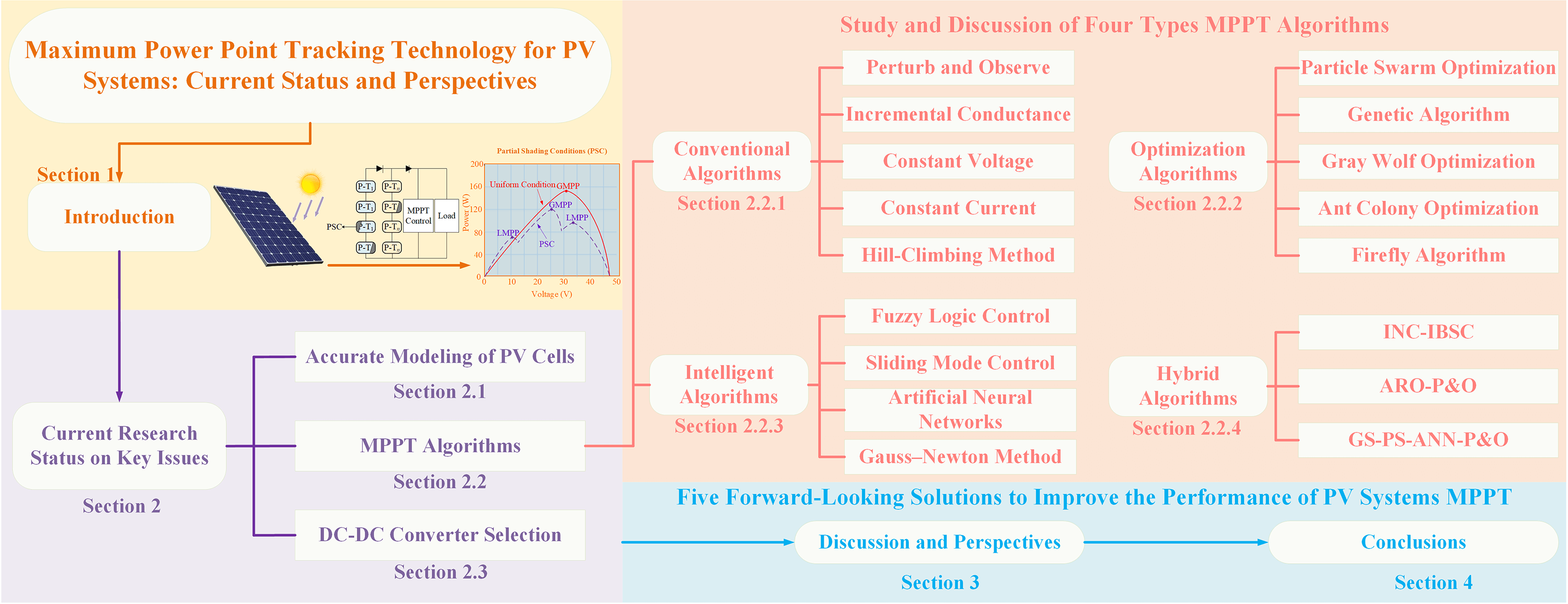 Open Access
Open Access
REVIEW
Maximum Power Point Tracking Technology for PV Systems: Current Status and Perspectives
1 Faculty of Electric Power Engineering, Kunming University of Science and Technology, Kunming, 650500, China
2 Intelligent Electric Power Grid Key Laboratory of Sichuan Province, Chengdu, 610065, China
3 Foshan Graduate School of Innovation, Northeastern University, Foshan, 528311, China
4 College of Information Science and Engineering, Northeastern University, Shenyang, 110819, China
* Corresponding Author: Zhengxun Guo. Email:
Energy Engineering 2024, 121(8), 2009-2022. https://doi.org/10.32604/ee.2024.049423
Received 06 January 2024; Accepted 26 March 2024; Issue published 19 July 2024
Abstract
Maximum power point tracking (MPPT) technology plays a key role in improving the energy conversion efficiency of photovoltaic (PV) systems, especially when multiple local maximum power points (LMPPs) occur under partial shading conditions (PSC). It is necessary to modify the operating point efficiently and accurately with the help of MPPT technology to maximize the collected power. Even though a lot of research has been carried out and impressive progress achieved for MPPT technology, it still faces some challenges and dilemmas. Firstly, the mathematical model established for PV cells is not precise enough. Second, the existing algorithms are often optimized for specific conditions and lack comprehensive adaptability to the actual operating environment. Besides, a single algorithm may not be able to give full play to its advantages. In the end, the selection criteria for choosing the suitable MPPT algorithm/converter combination to achieve better performance in a given scenario is very limited. Therefore, this paper systematically discusses the current research status and challenges faced by PV MPPT technology around the three aspects of MPPT models, algorithms, and hardware implementation. Through in-depth thinking and discussion, it also puts forward positive perspectives on future development, and five forward-looking solutions to improve the performance of PV systems MPPT are suggested.Graphic Abstract

Keywords
Cite This Article
 Copyright © 2024 The Author(s). Published by Tech Science Press.
Copyright © 2024 The Author(s). Published by Tech Science Press.This work is licensed under a Creative Commons Attribution 4.0 International License , which permits unrestricted use, distribution, and reproduction in any medium, provided the original work is properly cited.


 Submit a Paper
Submit a Paper Propose a Special lssue
Propose a Special lssue View Full Text
View Full Text Download PDF
Download PDF Downloads
Downloads
 Citation Tools
Citation Tools